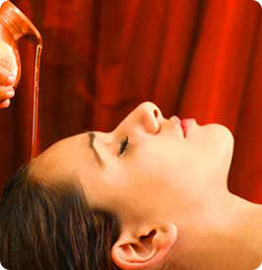Anumana

Ayurveda is a very vast medical science. It has several prescribed to various complex ailments that do not find solution in any other modern medical sciences. According to Ayurveda the fundamental cause of diseases is imbalance of the three doshas - Vata, Pitta and kapha. The state of balance or equilibrium between these three doshas in the body is called health and the state of imbalance or disequilibrium is disease. There is a wide range of methods in Ayurveda to assess diseases based on their constitution and then prescribe the suitable treatment. The threefold examination, or trividh pariksha as it is called, consists of investigation, which is carried out by the three methods. Read on to explore more about the stages of ailment investigation in Ayurveda.
Two Stages Preceding Anumana
Prashana
It is the stage in which the doctor questions the patient about his problems, ailments and symptoms. He also asks about the period since the patient is suffering from the aliment. He enquires about his daily routine, meal he intakes, his physical activities and several other question that can help the doctor understand the state of the patient and the root causes behind it.
Pratyaksha
It is the direct objective examination of the patient by direct methods like checking the pulse, measuring the intensity of breathing, size and state of stomach, any outer scars or wounds etc. This is the stage where physical evidences are collected in order to support the patient statements or checking out details beyond the patient’s explanation.
Anumana
The third and the most important stage of the examination is Anumana. It is basically the objective examination of the patient by indirect or inferential methods. The goal or purpose of investigation is to obtain a dear conception of the status of one's bodily strength including resistance (bala pramana), his accurate pathological condition (dosha pramana) and one’slife term (ayu pramana).
Methods of Anumana
Anumana is the anticipation of living beings i.e. the situation where the perceived knowledge is beyond the judgement of our senses we anticipate. Two important things are considered Lingi (matter) and Linga (property). By the means of Linga (property), the lingi is identified. Linga and Lingi has Samya relation (Intimate relation). The medical practitioner uses various indirect factors to diagnose the disease like for example:
- Strength is determined by capacity for exercise.
- Sense organs by their clarity of perception.
- Mind by the power of concentration.
- Understanding by the purposeful nature of action.
- Passion by the strength of attachment.
- Infatuation by the lack of understanding.
- Anger from the actions of violence.
- Grief by despondency.
- Joy by exhilaration.
- Pleasure from the sense of satisfaction.
| |
Other Categories
Ayurveda Pareeksha
Pratyaksha
Darshana
Anumana
Sparshana
Main Categories
Ayurveda Concepts
Nidan
Ayurvedic Approach to Healthy Life
Kaumarbhrutya
Ayurveda Diet
Ayurvedic Herbology
Prasuti Tantra
Principles of Ayurveda
Ashtang Ayurveda
Panchakarma Treatment
Prakruti and Vikruti
Dincharya
Ayurveda Basics
|

